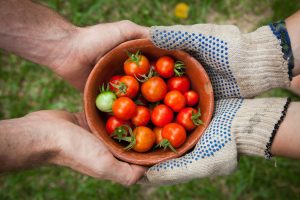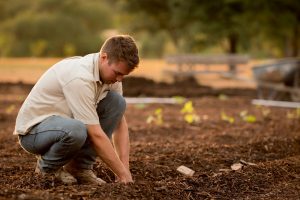Cemetery Cotton: Growing Flax in Urban Graveyard Microclimates
Cemetery cotton, also known as flax, is a crop that has been gaining popularity in recent years due to its versatility and ability to thrive in various environmental conditions. While traditionally grown in rural areas, innovative farmers have started experimenting with growing flax in urban graveyards, taking advantage of the unique microclimates found within these historic resting places. In this article, we will explore the concept of cemetery cotton, its benefits, and the techniques used to successfully grow this crop in urban graveyard microclimates.
The Benefits of Cemetery Cotton
Flax, or linen, has been cultivated for thousands of years and has been used for a variety of purposes, including clothing, household textiles, and even paper. Cemetery cotton, in particular, has been gaining attention for its sustainability and environmental benefits.
Sustainable Crop
Cemetery cotton is a sustainable crop, as it requires significantly less water and pesticides compared to other crops. It also produces a high yield, making it a cost-effective option for farmers. Additionally, the versatile nature of flax allows for every part of the plant to be utilized, reducing waste and increasing its sustainability.
Environmental Benefits
Growing flax in urban graveyards helps to combat urban heat islands, which are areas where temperatures are significantly higher due to urbanization. The plants act as natural cooling systems, and their broad leaves can reduce temperatures by up to 10 degrees. Furthermore, cemetery cotton also helps to absorb excess carbon dioxide from the air, contributing to cleaner and healthier air quality.
Growing Flax in Urban Graveyard Microclimates
The success of growing flax in urban graveyard microclimates relies heavily on the climatic conditions and soil quality found within these areas. Microclimates in graveyards offer a unique advantage for flax, as they tend to be sheltered from extreme weather conditions and provide better moisture retention compared to traditional farmland.
Choosing the Right Location
When selecting a location for growing flax in a graveyard, it is essential to consider the orientation of the plot and its proximity to surrounding structures. Cemetery cotton requires full sun exposure, so a plot with a southern or western orientation would be ideal. Additionally, choosing a location near a solid structure, such as a wall or a mausoleum, can provide shelter from strong winds and help to retain moisture.
Preparing the Soil
Before planting, it is crucial to test the soil to ensure it is suitable for growing flax. Cemetery soil typically contains high levels of humus, making it incredibly fertile. However, the soil might also be too acidic, which needs to be corrected by adding lime. Flax thrives in well-drained soils, so incorporating organic matter, such as compost or manure, can improve the soil’s structure and drainage.
Planting and Maintaining the Crop
The planting process for flax is quite simple; however, maintaining the crop properly is crucial for a successful harvest. Sowing the seeds in rows and keeping the soil moist but not waterlogged is necessary for germination. Weeding is also essential, as flax grows slowly and could easily be overwhelmed by other plants. After approximately three months, the crop will be ready for harvesting, with the entire process taking up to five months.
Conclusion
Cemetery cotton, or flax, is a versatile and sustainable crop that has great potential for growth in urban graveyards. The unique microclimates found within these historic resting places provide the perfect conditions for this crop to thrive, offering a variety of benefits, including sustainability, environmental benefits, and a high yield. With careful consideration for location, soil preparation, and proper maintenance, growing flax in urban graveyard microclimates can be a successful and rewarding venture for farmers and communities alike.










